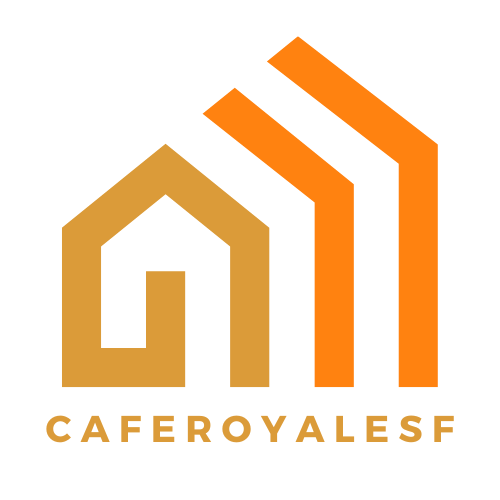Buying a home can feel like trying to climb Mount Everest—exciting but a bit daunting, especially when it comes to that pesky down payment. Enter low interest loans, the superhero of home financing. They swoop in to save the day, making it easier for aspiring homeowners to turn their dreams into reality without breaking the bank.
Table of Contents
ToggleOverview of Low Interest Loans for Down Payment
Low interest loans facilitate the initial investment needed for homeownership. These loans help borrowers manage down payment costs, which can be a significant barrier. Numerous lenders offer programs designed to keep monthly payments more affordable. Examples include options with interest rates significantly below average market rates.
Many low interest loans target first-time homebuyers, providing accessible solutions. Specific programs often cater to individuals in specific income brackets or those purchasing properties in designated areas. Borrowers may qualify for assistance based on creditworthiness and financial stability.
Discounted interest rates can significantly impact the overall cost of a mortgage. For instance, a loan with a 3% interest rate can save thousands over the life of a 30-year mortgage compared to a 5% option. This savings becomes crucial in budgeting and financial planning for homeowners.
Understanding the eligibility criteria remains essential. Applicants typically need to present a steady income, a reasonable credit score, and other financial details for assessment. Collaborating with a mortgage broker can streamline the process and reveal suitable options.
Online resources and local financial institutions provide more insight into low interest loan offerings. Individuals interested in homeownership should explore these opportunities to maximize their benefits. Taking time to compare various programs ensures that potential homeowners select the most advantageous option for their situation.
Types of Low Interest Loans

Low interest loans represent a viable option for covering down payments on homes. Various types cater to different borrower needs.
Federal Loans
Federal loans, such as FHA loans, provide essential support to first-time homebuyers. These loans feature down payment requirements as low as 3.5%. USDA loans, designed for rural properties, also offer low-interest terms with no down payment needed. VA loans exclusively for veterans and active-duty service members provide significant advantages, including no required down payment and no private mortgage insurance. These federal options help borrowers access affordable financing while easing the home buying process.
State Programs
State programs often supplement low interest loans aimed at assisting residents in purchasing homes. Many states offer down payment assistance programs that reduce initial costs for eligible buyers. These state-sponsored loans frequently come with competitive interest rates and flexible qualification criteria. Local housing finance agencies typically manage these initiatives, addressing specific community needs. Borrowers interested in state programs should explore options within their state to maximize the benefits available for home purchases.
Eligibility Requirements
Various factors determine eligibility for low interest loans for down payment support. Understanding these requirements can simplify the homebuying journey.
Income Limits
Income limits vary by program and locality. Many low interest loans target first-time homebuyers with incomes below the median level for their area. For example, in 2023, the income limit may reach $100,000 for a household of four in certain regions. Programs like USDA loans often impose stricter income caps, usually around 115% of the area’s median income. Engaging with local housing finance agencies provides clarity on income criteria. Individuals should check specific loan programs to ensure compliance with these limits.
Credit Score Criteria
Credit score criteria play a crucial role in determining eligibility for low interest loans. Generally, lenders prefer a credit score of at least 620 for conventional loans. However, FHA loans accept lower scores, sometimes down to 580, particularly for those with larger down payments. Multiple factors influence credit scores, including payment history and existing debt. Improvements in credit scores can significantly enhance loan prospects and rates. Prospective buyers are encouraged to review their credit reports and seek ways to boost their scores before applying.
Benefits of Low Interest Loans for Down Payment
Low interest loans for down payments offer significant advantages for aspiring homeowners. These loans enhance affordability and create opportunities for those seeking homeownership.
Affordability
Affordability emerges as a primary benefit of low interest loans. These loans reduce monthly payments and overall borrowing costs, which leads to substantial savings over the mortgage’s lifespan. Lower interest rates typically make the down payment less daunting, allowing individuals to invest in their homes without excessive financial strain. Borrowers can allocate their budgets to other essential expenses, enhancing their overall financial stability. Programs specifically designed for first-time buyers often feature lower rates, making homeownership achievable sooner rather than later.
Increased Homeownership Opportunities
Increased homeownership opportunities arise from low interest loans that empower more individuals to purchase homes. Lower down payments reduce barriers for those with limited savings, facilitating entry into the real estate market. First-time homebuyers face fewer obstacles when evaluating their options, thanks to these favorable loan terms. Federal and state programs target specific populations, further expanding access to affordable housing. Communities benefit as more individuals secure homeownership, bolstering local economies and fostering stable environments.
Potential Drawbacks
Low interest loans for down payments offer significant benefits, yet they come with potential drawbacks. It’s vital for borrowers to consider these challenges before making commitments.
Limited Availability
Availability of low interest loans can pose a challenge for many potential buyers. Not all lenders provide these programs, and eligibility criteria may vary widely. Specific income brackets or geographic areas often define access to these loans. For example, federal loans may cater mainly to first-time homebuyers and might exclude higher-income individuals. Additionally, local housing finance agencies may have limited budgets, which can restrict the number of loans offered. Individuals may find resources like state-specific programs useful, but they must remain aware that these options aren’t universally accessible.
Impact on Overall Loan Costs
Overall loan costs can be affected despite the low interest rates. While initial savings are apparent, some low interest loans may carry higher fees or stricter terms. Borrowers might face additional costs that negate some of the interest savings. For instance, increased closing costs can arise from specific loan programs, which can lead to a higher debt-to-income ratio. Monthly obligations may still remain manageable, yet long-term financial implications deserve consideration. Understanding the total cost of borrowing helps ensure that choosing a low interest loan remains a sound financial decision.
Low interest loans for down payments present a valuable opportunity for many aspiring homeowners. By reducing the initial financial burden of purchasing a home, these loans open doors to homeownership that might otherwise remain closed. With various federal and state programs available, individuals can find options tailored to their unique circumstances.
While the benefits are significant, it’s crucial for borrowers to carefully assess eligibility requirements and potential costs. By doing so, they can make informed decisions that align with their financial goals. Exploring local resources and consulting with mortgage professionals can further enhance the homebuying experience. Ultimately, embracing low interest loans can lead to a more accessible path to homeownership, fostering stability and growth within communities.







